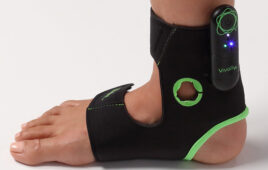Medtech can improve by thinking more about the problems it is trying to solve and looking outside of normal avenues for inspiration.

[Photo by Sinan Helfenstein on Unsplash]
For companies and academics aiming to innovate in the medical space, we often don’t spend enough time thinking about the problem we are trying to solve. This goes far beyond reading the academic literature. We need to think critically and constantly pressure test our assumptions to really understand problems and turn them into opportunities for solutions. This often involves connecting biology and materials science to practical considerations for technology implementation by the clinician, as well as all the other factors, such as market pull, regulatory, reimbursement, manufacturing, and patents for example. It’s about committing to a journey that can lead to critical insights that direct us towards the most tractable solutions. And for that, we need a different set of tools to help challenge our thinking and constantly bring in fresh ideas and perspective.
Jeff KarpOne approach we have implemented to constantly bring in new ideas is to turn to nature for inspiration. Millions and millions of years of research and development at our fingertips, and all we need to do is look outside to the amazing creatures that inhabit our planet. We like to harness lessons from nature for inspiration, from creatures such as geckos, spiders, jellyfish, porcupine quills, snails, and spiny-headed worms.
Another approach is radical simplicity — reducing a problem to its essence. This tool has been harnessed to develop a new skin care approach that is advancing towards global market adoption, and therapeutic strategies to combat inflammatory bowel disease and arthritis that are advancing towards clinical studies. Some of the technologies are rapidly advancing to the clinic and some are already on the market helping patients. We must constantly pave new paths to continual innovation that is essential in our fast-changing world.
Jeff Karp is a professor of medicine at Brigham and Women’s Hospital, Harvard Medical School, Principal Faculty at the Harvard Stem Cell Institute, and an affiliate faculty at the Broad Institute and at the Harvard-MIT Division of Health Sciences and Technology (where he teaches to HST and MIT-Sloan business school students). His work spans the fields of drug delivery, medical devices, stem cell therapeutics, and tissue adhesives.




